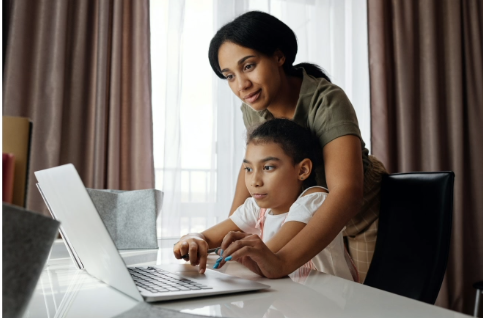
Right now, education looks a little different. Some students are back in the classroom in socially distant set-ups; others are taking classes on Zoom; some are being homeschooled. There’s one constant: all need internet access for academic success.
But nearly 15 percent of all families with school-age children don’t have internet access at home. For low-wage families, this number is even greater: some 35 percent of families earning less than $30,000 a year lacking high-speed internet, compared to just 6 percent of families earning more than $75,000. This digital divide disproportionately impacts students of color and those from low-wage families.
Often referred to as the “homework gap,” this lack of access prevents students from successfully completing assignments. In a survey by Pew Research Center, nearly 25 percent of Black teens said they couldn’t complete homework because they lacked internet or a computer at home, and 40 percent of Hispanic teens reported having to do their assignments on a cellphone. With COVID-19 forcing many students to rely on virtual learning, this issue has moved way beyond homework. How will students without internet access get online for class, engage with their teachers, and learn with their peers?
United Way is working to help bridge this gap by connecting students to learning. In Jackson, Mississippi, United Way of the Capital Area is directing COVID funds to underwrite internet service for low-wage families. United Way of Central Maryland is providing tablets for kids to use for schoolwork in Baltimore. And United Way of Metro Chicago joined forces with Chicago Public Schools, the city of Chicago and others to raise $47 million for high-speed internet for 100,000 families with children.
Through a partnership with Extreme Networks, United Way is working on the ground with school systems, corporate partners and local governments to provide with Wi-Fi and hardware access to communities most in need.
As children adapt to learning in this virtual environment, all of us must step up to ensure they have access to internet and the digital devices they need to succeed in school and build a brighter future.




